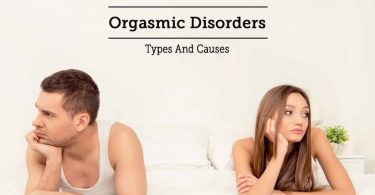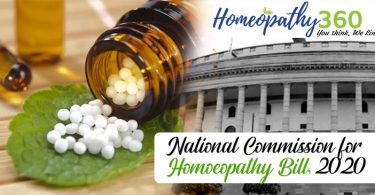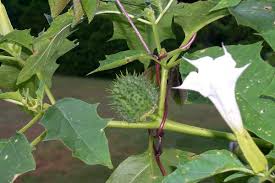Melasma is one of the most common skin problems occur due to excessive exposure to sunlight or after delivery. Patient attended out-patient department (OPD) chiefly for complaints of blackish discolouration over face with thin, transparent leucorrhoea. After unsatisfactory outcome with modern medicine for one year, patient turned to homoeopathic treatment. After detailed case‑taking and repertorization, Sepia succus 200CH was given along with Placebo, and gradually, the medicine was repeated as per the response upon the patient. Within 3–4 months of homoeopathic treatment, the patient started improving and continues to be free from her complains at the time of last visit in OPD (Fig.2 & Fig. 3).
Keywords: Case report, Melasma, Leucorrhoea, Homoeopathy, Sepia succus.
INTRODUCTION
Melasma, formerly known as chloasma, is an acquired pigmentary condition1.Melasma is a chronic acquired hypermelanosis of the skin, characterized by irregular brown macules symmetrically distributed on sun-exposed areas of the body, commonly on the face2 mainly in three predominant facial patterns: centrofacial, malar, and mandibular.1 The word melasma originates from the Greek word “melas”, which means black, and refers to its brownish clinical presentation. The term “chloasma” (derived from the Latin chlóos and the Greek cloazein: greenish) is still used in the medical literature. It is a common cause that affects mainly women (especially during the menarche). Its pathogeny is not, although there are some known triggering factors such as sun exposure, pregnancy, sexual hormones, inflammatory processes of the skin, use of cosmetics, steroids, and photosensitizing drugs. There is also a clear genetic predisposition, since over 40% of patients reported having relatives affected with the disease2. Because its frequent facial involvement, the disease has an impact on the quality of life of patients. The prevalence varies according to ethnic composition, skin phototype, and intensity of sun exposure2. In India it occurs mainly in women (90% cases) and 10% of males of all ethnic and racial groups. In India, 20–30% of 40–65 years old women present a facial melasma3.
Sepia succus is prepared from dried liquid contain in the ink-bag of cuttle fish in which a “a “tell-tale face” of uterine ailments. is mentioned in the Homeopathic Literature.4 who are irritable, indifference to her family, perspiration on hand, transparent leucorrhoea, disturbed sleep, Chloasma, frequent urging to urinate.
CASE PROFILE-
PRESENT COMPLAINT AND HISTORY OF PRESENT COMPLAINT- A 35-year-old female attended outpatient department (OPD) of Dr. Girendra Pal Homoeopathic Hospital and Research Centre in July 2019 with the complaints of Black discoloration of face(forehead, both cheeks) for 3-4 years with itching, occasionally, Uses allopathic ointments on face for about one year, along with white discharge from vagina for 2-3 years which is thin, profuse transparent, aggravated in morning (on waking) associated with pain in lumbar region that increases in morning.
PAST HISTORY – Patient at the age of 15 years had Intermittent fever which was cured after homoeopathic treatment.
FAMILY HISTORY – Mother was hypertensive and father was diabetic. She has three Siblings who are healthy and alive.
PERSONAL HISTORY – Patient belong to lower class and works as farmer has her own land. She is exposed to sunlight for long duration as she has to work in field for many hours.
PHYSICAL GENERALS- Her appetite is good having three meals per day with normal thirst of 3-4 litres /day. She has desire for spicy food (add extra red chilli to her food) with aversion to soyabean. She has profuse sweat mainly in hands. Bowel movements are satisfactory with retention feeling after urination with frequent urging. Pain in lower abdomen in hypogastrium mainly after urination. Patient is chilly (craves hot drinks, prefers summer, and cannot tolerate cold, wants extra coverings). Her sleep is unrefreshing, full of dreams. Her menstrual cycle is regular of 28 days, but flows is scanty with dark clotted blood.
MENTAL SYMPTOMS – She getsirritable easily when others do not listen to her, wants to be alone. She do not like company of her family members as she thinks no one in the family understand her.
LOCAL AND SYSTEMIC EXAMINATION- Tongue was slightly white coated. All the vitals are normal. On skin examination, hyperpigmentation is present on forehead and both cheeks which is black in colour.
PROVISIONAL DIAGNOSIS: Melasma5
TABLE NO. 1: ANALYSIS AND EVALUATION OF THE CASE–
| Mental Symptoms | Physical Symptoms | Particulars |
| Get irritable easily when others do not listen to her.3+Indifference to family.2+Reserved, not share anything with anyone.3+ | Desire for spicy food.2+Aversion to soyabean.1+Profuse sweat mainly in hands.2+Frequent urging of urination.2+Pain in lower abdomen in hypogastrium > after urination.2+Sleep is unrefreshing full of dreams.3+Scanty menses with dark clotted blood.3+Continuous exposure to sunlight3+Tongue was slightly white coated.1+ | Blackish discoloration of face.3+Leucorrhoea which is thin, profuse, transparent agg. in morning (on waking).2+Pain in lumbar region <morning2+ |
MIASMATIC ANALYSIS6
Miasmatic evaluation for the presenting symptoms was done with the help of “The Chronic disease by Dr. Samuel Hahnemann” showed the predominance of psoric miasm.
REPERTORIAL TOTALITY-
The following rubrics were selected from Synthesis Repertory 9.0 from RADAR 10.0: 7
Figure 1: Repertorisation of case from Synthesis Repertory using RADAR software.
JUSTIFICATION OF SELECTION OF REMEDY AND POTENCY:
Sepia succus 200/1dose/stat followed by Placebo for 10 days was first prescription because it covered maximum rubrics with maximum marks after repertorization. Sepia succus covered 13 symptoms out of 17, those are irritable, indifference to her family, reserved in nature, perspiration on hand, transparent leucorrhoea, also white in colour, menses scanty, sleep disturbed due to dreams, frequent urging to urinate. After comparison of symptoms from various books of Materia Medica8, Sepia succus appears similimum to the totality of symptoms of the patient. Moderate susceptibility (According to his work and habit) and the medicine covered maximum symptoms; hence 200 potency was selected.9
INTERVENTION – On 25/07/2019, Sepia succus 200 single dose was prescribed along with Placebo 30 for 15 days based on totality of symptoms after repertorisation and comparison of symptoms from various books of Materia medica.
TABLE 2: FOLLOW-UPS WITH PRESCRIPTION
| Date | Symptoms | Medicine |
| 08/08/2019 | Irritability decreases. Pain in lumber region present. Leucorrhea- slightly get scanty. No changes seen in discoloration of face. | Placebo 30/TDS/15 days |
| 23/08/2019 | Irritability gets better. Discharge from vagina is better. Pain in lumber region slightly better. No changes seen in discoloration of face. | Sepia succus 200/ 1dose/ Placebo 30/TDS/ 15days. |
| 07/09/2019 | Relief in almost all symptoms. Slight changes in discoloration in cheek(right). | Placebo 30/TDS/30 days. |
| 07/10/2019 | General amelioration in all symptoms. | Placebo 30/TDS/15 days |
| 22/10/2019 | Reappearance of symptoms White discharge from vagina. Reduction in discoloration of face(both cheeks) | Sepia succus 200/1dose Placebo 30/ tds/ 30 days |
| 23/11/2019 | Leucorrhea- better Discoloration of skin- better | Rubrum 30/ tds/ 30 days |
| 21/12/2019 | All symptoms are better. | Rubrum 30/tds/30 days. |
| Figure 3: Patient after the treatment |
| Figure 2: Patient before the treatment |
DISCUSSION
Melasma is common in person who are very much exposed to sunlight, after delivery, stress and hormonal imbalance. In the previous study10, melasma was treated with lycopodium with repetition when required. In this case, patient presented with blackish discolouration of face due to exposure to direct sunlight diagnosed as chloasma. Sepia succus was selected as a similimum on the basis of totality of symptoms assessed on mental and physical aspects. Sepia succus 200 was prescribed with repetition of medicine when required which shows reduction in hyperpigmentation of face along with discharge from vagina.
CONCLUSION
This case report shows that homoeopathic along with lifestyle management can contribute towards treatment of melasma. It re-confirms the importance of individualized homoeopathic approach in managing melasma cases.
REFERENCES
- Ogbechie-Godec OA, Elbuluk N. Melasma: An Up-to-Date Comprehensive Review. Dermatol Ther (Heidelb). 2017[cited 2021 Feb.16] ;7(3):305-318. doi:10.1007/s13555-017-0194-1
- Handel AC, Miot LD, Miot HA. Melasma: a clinical and epidemiological review. A Bras Dermatol. 2014 [cited 2021 Feb.16] ;89(5):771-782. doi:10.1590/abd1806-4841.20143063
- Nouveau S, Agrawal D, Kohli M, Bernerd F, Misra N, Nayak CS. Skin Hyperpigmentation in Indian Population: Insights and Best Practice. Indian journal of dermatology. 2016[cited 2021 Feb.16] ;61(5):487-495. doi:10.4103/0019-5154.19010
- Allen HC. Allen’s Keynotes Rearranged and Classified Leading Remedies of the Materia Medica and Bowel Nosodes. New Delhi: B. Jain Publishers(P)Ltd.2005
- Khanna N. Illustrated Synopsis of Dermatology and Sexually transmitted diseases. 4th ed. New Delhi.Elsevier Publication; 2015.
- Hahnemann S. The chronic diseases their peculiar nature and their homoeopathic cure. Low Price Edition. New Delhi: B. Jain Pulishers Pvt. Ltd.; 2002
- RADAR [computer program]. Version 10.0. London: Archibel Homeopathic software.
- Boericke William. New manual of Homoeopathic Materia Medica with Repertory. 3rd ed. New Delhi: B. Jain Publisher (P) ltd. 2007: 1033.
- Mandal PP, Mandal BA. Textbook of Homoeopathic Pharmacy.2nd ed. Kolkata: New Central Book Agency(P)Ltd 2009.
- Nwabudike L. Homœopathic Links. 2012; 25(2): 99-101. Available on https://www.thieme-connect.com/products/ejournals/abstract/10.1055/s-0031-1298497
AUTHORS:
Dr. Tarkeshwar Jain, Head of Department of Materia Medica, Dr. M.P.K. Homoeopathic Medical College, a constituent college of Homoeopathy University, Jaipur.
Dr. Prastuti Jaiswal, Assistant Professor, Dr. M.P.K. Homoeopathic Medical College, a constituent college of Homoeopathy University, Jaipur.Dr. Ayushi Malhotra, MD Scholar, Department of Materia Medica, Dr. M.P.K Homoeopathic Medical College, a constituent college of Homoeopathy University, Jaipur





